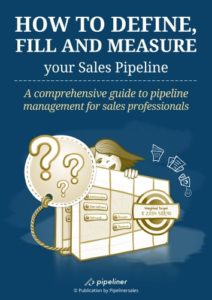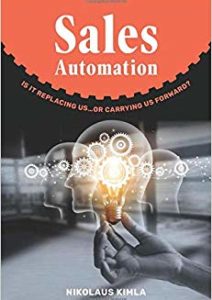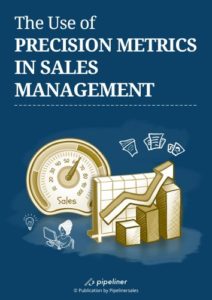We have shown, throughout this series, that the new function known as RevOps—revenue operations—is uncannily similar to Pipeliner CRM. Both were created to bridge departments that previously existed in their own silos. Let’s now talk about the future of RevOps—where it is going.
Risks and Benefits of Centralization
RevOps certainly means data centralization. There can be a risk to centralization, as we witnessed recently when Instagram, Facebook, and WhatsApp were shut down for most of an entire day. In that case, when one went down, they all did.
There is a considerable difference between centralization in a company and government centralization. We’re not discussing centralization within a government, but only within an enterprise. Centralized data in a company means that the data streams its way into a repository, is then available for analytics, and is used for forecasting and prediction.
Clearly, we see that data centralization is an important factor in the future of RevOps. RevOps should centralize all data points, different data matrixes, and KPIs. A clear overview of the data is now possible, highlighting trends used for analysis and strategy.
Processes can then be created from the data and its trends. Full automation is possible so that when a particular data point is detected, a process is triggered based on parameters previously set up. When something changes, then another process is begun.
The Power of The Customer
In another divergence between a company and a government, the power is with the customer for a company. Therefore the customer should be in the driver’s seat.
All it takes for a company to lose a customer, in free-market competition, is for that customer to realize they’re not getting the service they need and want. A government, of course, has no completion, and that is where centralization can become risky and even downright dangerous.
4 Steps for The Future
Let’s now go through the 4 steps we see for the future of RevOps. Before we start, let me clarify that the “future” I’m talking about in the near future, the next 1 or 2 years, not the far future of 5 or 10 years.
1. Application Selection
A company must begin with the selection of applications that will enable data collection for the data repository. To do so, a company needs to decide which data from each department or application is vital to gather into the repository to be accessible. This step can take some time, as data types need to be isolated, and suitable applications must be chosen and connected through OpenAPI.
2. Visualization of Data
Which data is vital to be visualized for users? That is the next decision a company must make. There won’t be out-of-the-box reports that will automatically render data visually—they will need to be tailored for a company’s particular use.
Depending on the company’s business model, this procedure could be complex or simple. For instance, if an enterprise has multiple product or service lines, they’ll have many different data types that cannot be mixed. One product line could have a very different kind of sales process than another product line. Services and products, if a company has both, also need to be kept entirely separate. At the same time, this data needs to be skillfully combined so that it can be visualized and trends can be seen.
As RevOps collects data from the different departments, those departments should be able to provide feedback. Is the data being provided helpful? Are they able to see the trends they need to see?
3. Bottom Line: Servicing the Customer
Combination of data from all departments must be done in such a way that the real power fueling the company—the customer—is served. They should be alert to the fact that automated processes cannot always service the customer—there will be times when human intervention is absolutely necessary.
In a particular example, today’s companies—especially SaaS companies—are quite focused on customer renewals. In past times, renewals were outsourced to a single role with a company, the customer success manager. That person was generally not operating with all available information, though, and to that degree was somewhat crippled.
Fortunately, we now have RevOps running above and across all departments of a company. The data needs to reflect all information about a customer, such as how are they interacting with support? With accounts receivable? With sales reps? The data needs to be utilized to service the customer in every way.
There are too many examples of a company’s focus being elsewhere than the customer experience. Take a phone call to a typical bank. After going through a tree of recorded menus, you then must wait…and then, it’s likely you’ll be switched to wait in another line. If you complain, they reply, “Thank you for your feedback,” but they never actually respond to you. There are other banks (Capital One’s “banking reimagined” campaign comes to mind) that will take advantage of this kind of treatment, and they’re likely to pick up a lot of dissatisfied customers from their competitors.
Companies have instituted another method of customer interaction that people have come to hate—the chatbot. Initially, companies promoted their use of the chatbot as a way of genuinely caring for their customers—but it has seriously backfired. Nobody wants to talk to a chatbot. They want to speak with an actual human. Asking a chatbot a somewhat complicated question will probably get you the same response as if you put one to Siri: “I’m sorry, I cannot answer that.”
The challenge for RevOps is the employment of data from across departments in the servicing of the customer. When necessary and where it makes real sense, actual human interaction should be used.
4. Creation of Workflows
RevOps 4th step is that it must be able to create perfect automated workflows. That means that when an event takes place, a process is triggered. A person might be involved in responding through an email or maybe a phone call. Through such a process, the customer should feel positively touched.
A process should never have a result such as an airline passenger being physically hauled off a plane because they won’t surrender the seat they paid for. Again in airlines, processes should not result in constantly rebooked flights (as we’ve seen during covid). As noted earlier, when a customer is no longer gracious, the company is in a dangerous situation. Such events result from badly flawed processes.
When a company goes all out to create processes that result in happy customers, customers will rush to them, leaving behind companies that have not satisfied them. Customer tolerance for bad service or treatment no longer exists—because it doesn’t have to. When a company doesn’t deliver what they need, want, or require, they’ll turn around and go away. Let’s say, for example, you have a car service, and a good customer comes in and desires a car that you usually have, but this time you don’t. If you’re not doing everything you can to satisfy that customer, they’ll move on, I promise.
There is another reason customer’s don’t tolerate bad service, and that is that the binding between buyer and seller, always present previously, has disappeared. That binding factor is the buyer-seller relationship. A seller would go out and actually speak and meet with customers. Today all that remains of that relationship is a “relationship” with a machine.
Processes not designed to serve the customer, but instead designed to serve the company, generally result in bad customer relationships. Look at the recent Senate hearings on Facebook, in which a whistleblower testified that Facebook processes were only put to use when they could even get half to one percent more of revenue out of a customer. The company was strictly focused on profit, not servicing the customer or the community. This will hurt the company in the long run.
Kodak is another example of a company operating only on profit. In their heyday, they had hundreds of thousands of employees, but ignoring what customers actually needed (in one notable example, digital photography) has caused them to all but disappear.
RevOps should exist to service the customer in everything they do. They need to walk in the customer’s shoes and fully understand what the customer wants. That’s the only way companies will be able to keep customers.















Comments